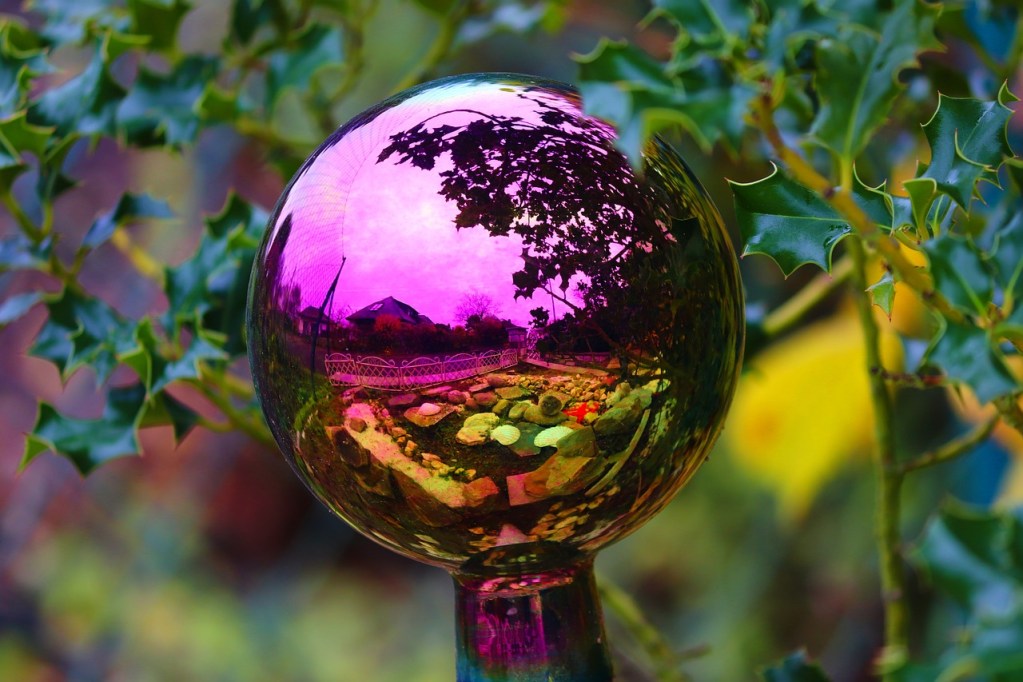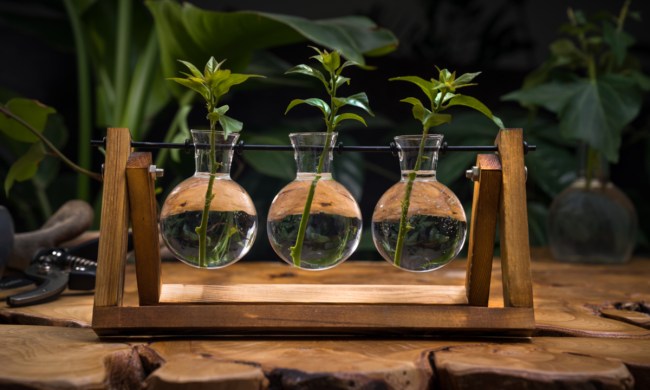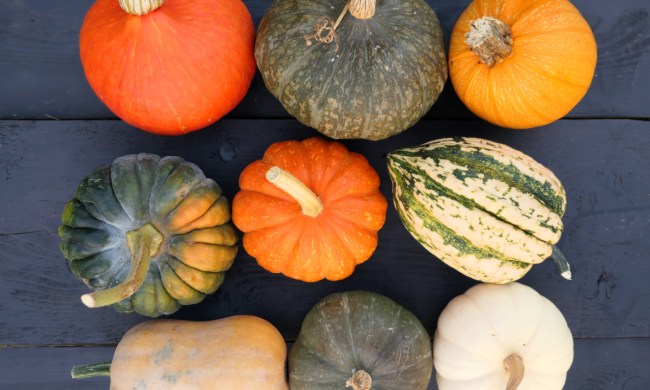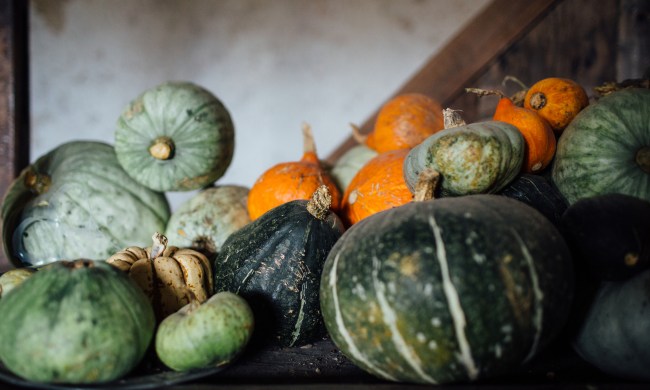Not being able to water your plants doesn’t have to mean instant death for them! Whether you’re going away for vacation or find yourself too busy to consistently water your plants, water globes for plants can be a reliable source of hydration for a few weeks. Plus, there are tons of colorful options, so no matter what your personal aesthetic is you’re sure to find one that work for you. How useful are these gardening tools, and are they more effective than other watering methods? We’ll answer all your questions and even recommend some of our favorite water globes!
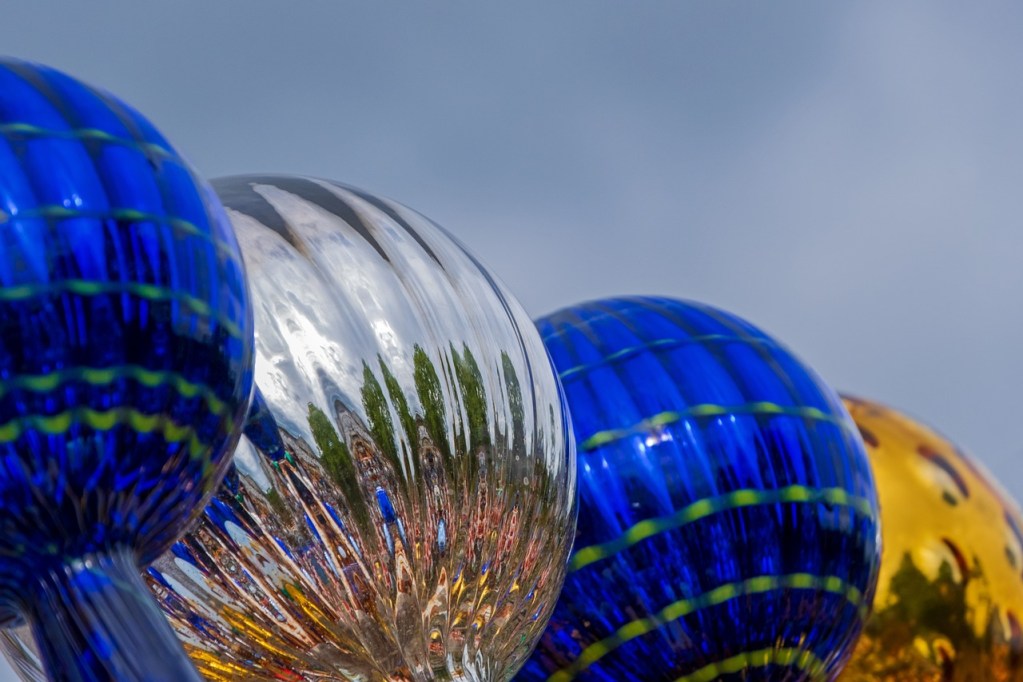
What is a water globe?
The idea of a water globe is straightforward. Essentially, you have a sphere made from glass, plastic, clay, or metal with a long, thin neck. At the end of the neck, you’ll find a small opening that slowly dispenses water after you fill up the globe and stick it into your soil. When your soil dries out, air gets into the globe, which pushes a small amount of water out of the stem.
Pros of water globes
Water globes are great if you’re going away for a while or find yourself without much time to tend to your plants. They can usually keep your soil moist for between seven to 14 days. If you’re out of town for a week or two or have a particularly thirsty plant, a water globe can be a quick and relatively affordable solution. It’s especially ideal for water-loving plants such as ferns and calatheas, which appreciate moist soil.
Cons of water globes
There are some matters to consider, of course. A globe can be fragile, especially if you get a glass one. Also, the amount of water dispensed can be variable, depending on how you stick the globe into the soil, the size of the sphere, and your home temperature conditions. While water globes dispense water slowly and don’t waterlog your soil, they aren’t the best choice for plants that prefer to fully dry out between waterings, such as cacti and succulents.
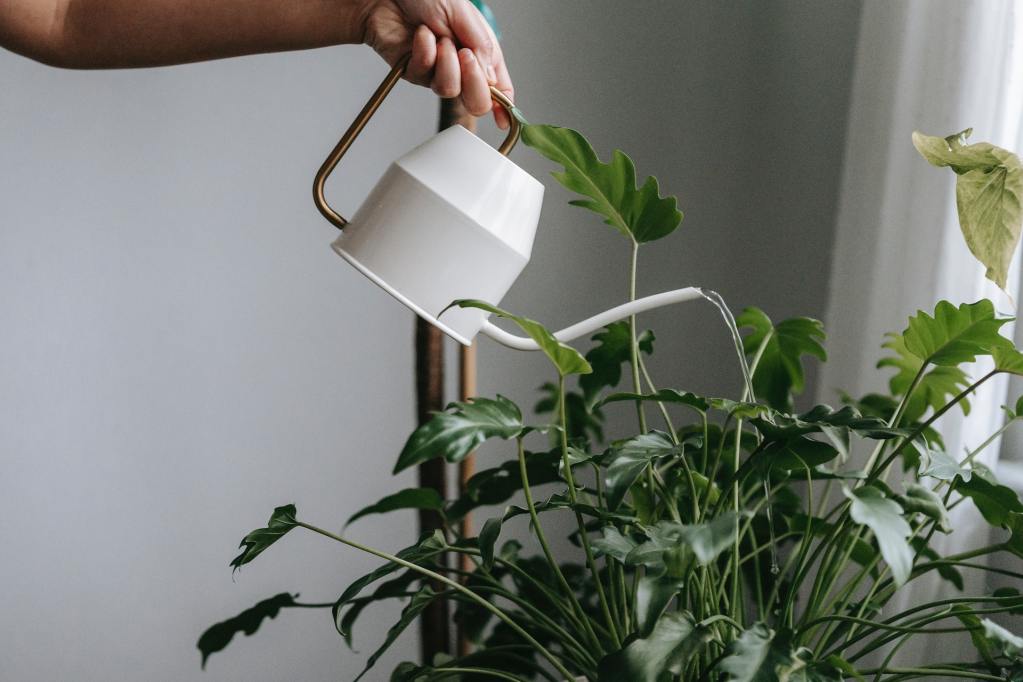
How to use water globes for plants
Water globes are useful garden tools, but they can’t fully replace traditional watering. The slow release of water is great for keeping plants alive when you’re away, but your plant will still need a more thorough watering when you get back. Water globes are best used to supplement your traditional watering method of choice. You can use water globes with both regular watering and bottom watering, as well as both indoors and out. They work best with larger, deeper pots. Smaller or more shallow pots can sometimes tip over under the water globe’s weight.
Water your plants thoroughly before you put your water globe into the soil. Since a water globe in dry soil will begin releasing water, watering your plants first will keep your water globe full longer. To stop soil from clogging the water globe’s tube and preventing the water from draining, poke a hole in the soil for your water globe to slide into. This will keep your water globe functional and make cleaning it easier. Refill your water globe every 1 to 3 weeks, depending on the size and how often your plants get water from other sources. Remember to water your plants before putting the water globe back after refilling it!
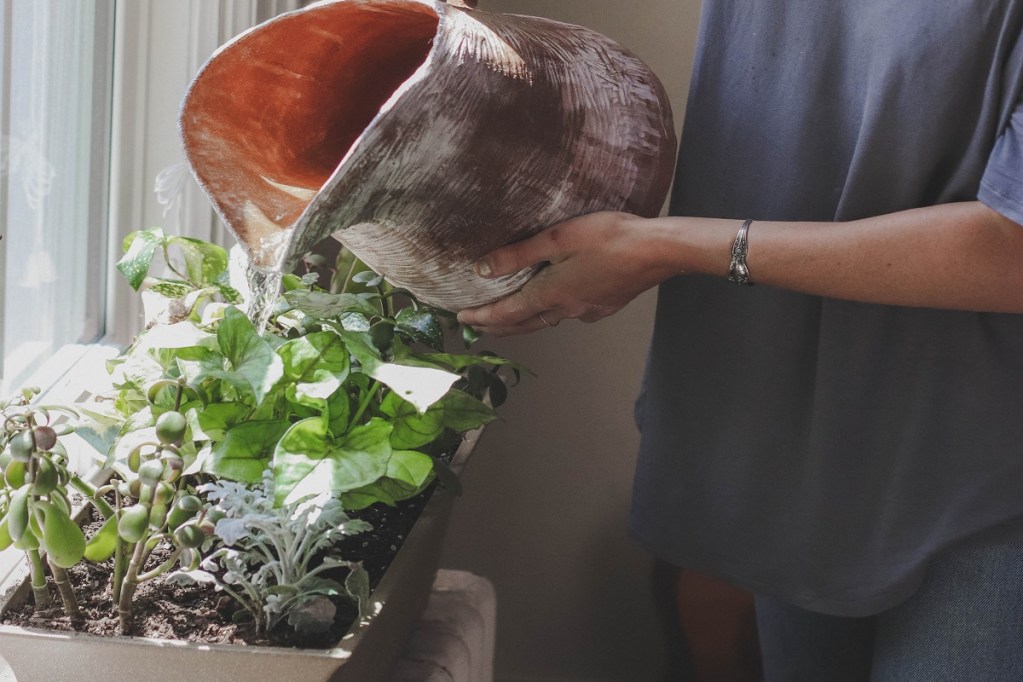
Best water globes to buy
Finding the perfect water globes for your plants and watering needs can depend from case to case. Ahead, we rounded up our favorite water globe systems for keeping plants hydrated and happy.
Alotm 10Pcs Plant Watering Bulbs
For an economical choice, pick up the Alotm 10 piece plant watering bulbs to keep all of your plants well watered when you’re too busy or on vacation. For less than $30, you get 10 globes made from durable plastic PVC, which makes it easy for you to tell how much water your plants need. The long neck on each globe allows you to easily adjust the angle that goes into your plant. If you have quite a few thirsty plants that need to be watered, this is a budget-friendly choice to get in bulk! For bigger plants, you can also add two or more water globes to your soil to ensure that your plant stays hydrated.
Plant Nanny Recycle a Plastic Bottle Terracotta Watering Stakes
The Plant Nanny stake isn’t technically a water globe, but the concept is the same. Before tossing old water bottles into the recycling bin, consider using them to water your plants! The idea with the Plant Nanny system is that you attach an old water bottle to the terracotta watering stakes provided — you can use a 12-ounce or a one-liter bottle! With the Plant Nanny stakes, pre-moisten your soil before you add a stake to the center of your plant. Then, fill an old water bottle, attach it to the adapter provided, and insert it into a stake with a finger on the release port. Just keep in mind that the stakes work better with some bottle brands over others — it’s most compatible with bottles from Polar Springs, Dasani, Smart Water, Fiji, Coke, and Pepsi.
Blazin’ Bison Indoor Plant Watering Globes
For a touch of color among your plants, add these hand-blown water globes from Blazin’ Bison. The marbled translucent colors (which include blue, green, teal, and red) and glass material give this set an artisanal feel that’s more elevated than typical plastic water globes. At $25 for a set of four, this set isn’t the most economical option out there, but it can add a tasteful touch to your plant collection. When they’re not watering your plants, these globes also make for beautiful home and garden decor pieces.
KiKiHeim Plant Waterer Self-Watering Bulbs
For a whimsical touch to your plant decor, consider grabbing water globes in different shapes! KiKiHeim carries water globes in shapes such as birds, mushrooms, and snails. In addition to the quirky shapes, the clear glass will allow you to see your water levels easily. According to the manufacturer, the globes can keep your plants hydrated for up to three weeks, though your mileage may vary depending on how you insert your globe and how big your plant is. Each set of two costs around $20, so this option is one of the more expensive ones on this list.
Watering globes may sometimes get glanced over when it comes to plant care, but they can work in a pinch if you need a little help with watering your plants. If you’re on a budget, you can buy plastic globes in bulk to keep your plants happy and hydrated. If you’re open to splurging a little, you’ll find glass globes in beautiful shapes and colors, too.
Whichever style you go with, a water globe can save you the hassle of returning home from vacation (or a busy period in your life) to desiccated and unhappy plants.
